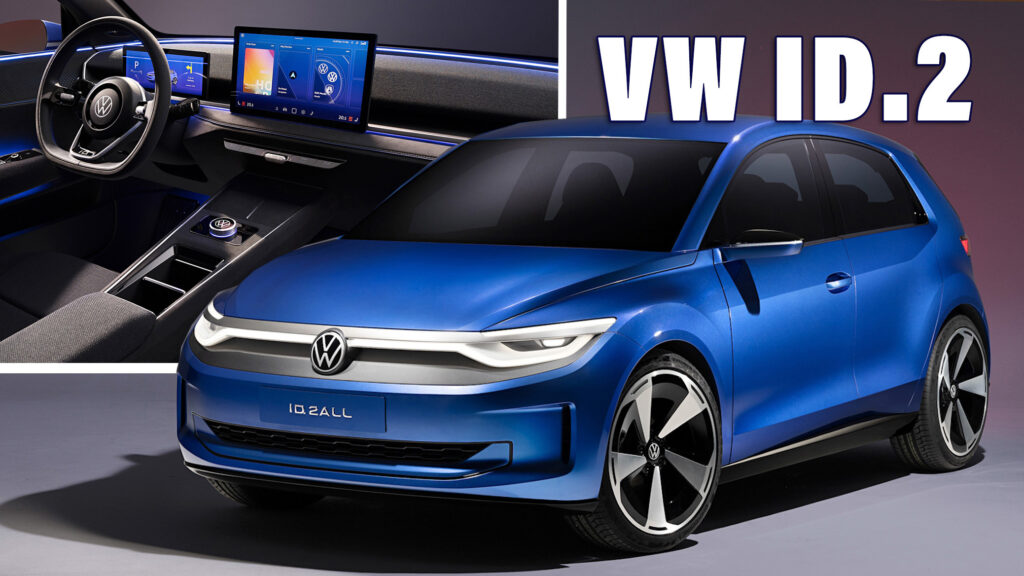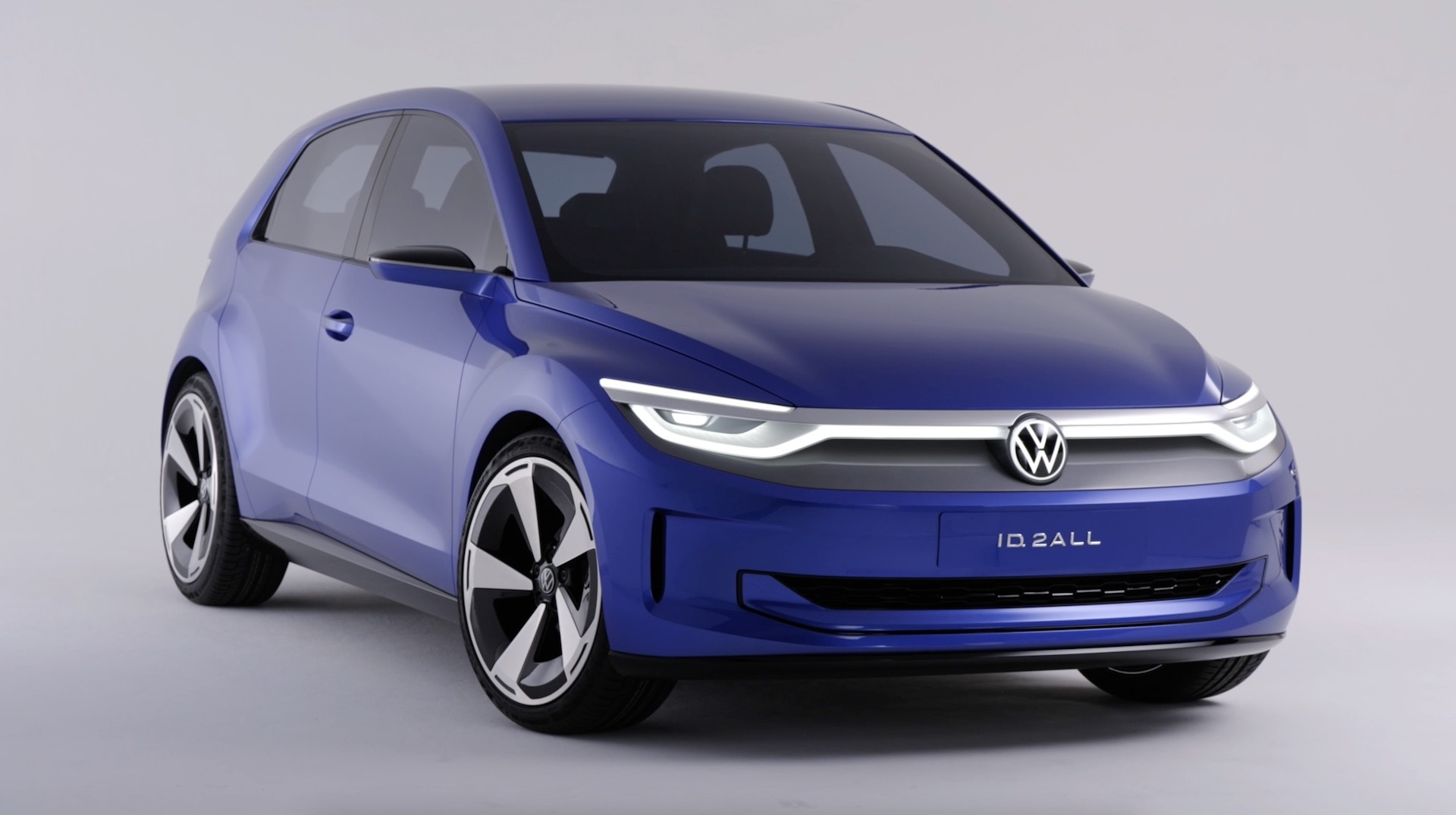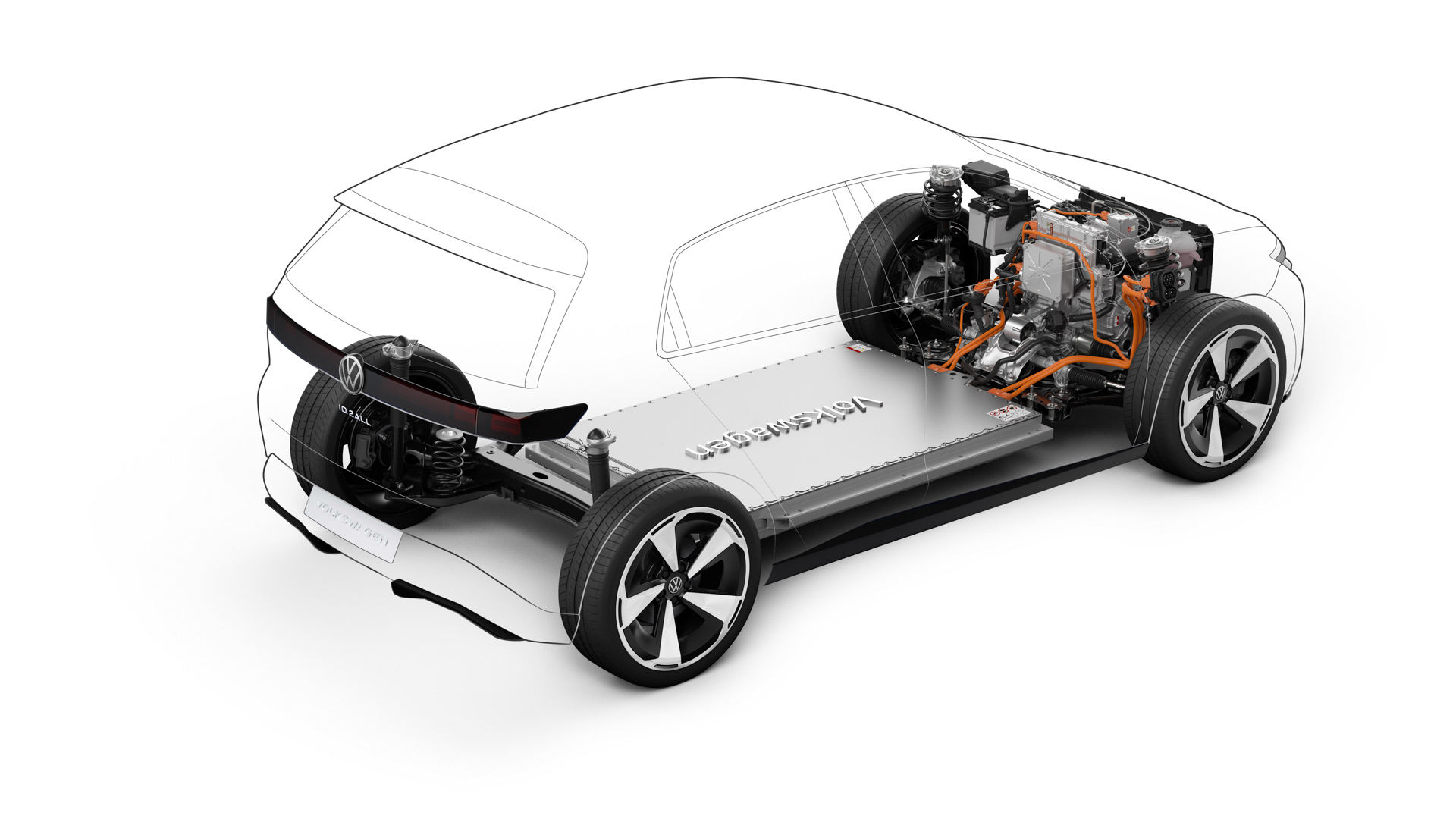Volkswagen has stepped up its battle to dominate the EV market with the ID.2all, a concept that’s pretty much representative of the €25,000 hatchback European VW dealers will be offering from 2025.
That Euro price translates to $27,000, or £22,000, which would make the ID.2 VW’s most affordable electric car, and give the company something to help it fend off the long awaited Tesla Model 2 and the wave of aggressively-priced EVs that will make their way over from China in the coming years. But cheap doesn’t have to mean slow. VW says the ID.2’s single 223 hp (226 PS) electric motor will get it to 62 mph (100 kmh) in less than 7 seconds – perhaps only half a second behind the current Golf GTI.
Related: VW Confirms Sub-$21k Entry-Level ID.1 Small Electric Hatchback
The ID.2all rides on a shortened version of the same MEB electric platform found under every VW EV from the ID.3 to the ID.Buzz, but while the single-motor versions of those cars have their powertrain at the back driving the rear wheels, the ID.2’s front-engine, front-wheel drive layout is closer to a conventional ICE-powered small car. And the the ID.2all is small, at least on the outside. At 160-in (4,050 mm) long it’s actually fractionally shorter than a current Polo, but the 102.4-in (2,600 mm) wheelbase is closer to a Golf’s, and VW promises a similar amount of interior space.
Echoes Of Mk1 Golf
You’ve probably spotted that space isn’t the only thing the ID.2all has in common with the Golf. The new EV’s chunky styling, in particular it’s C-pillar design, which VW likens to an archer’s bow under tension, is clearly inspired by Giugiaro’s work on the original Golf of 1974 and we’re told will become a common feature on other future Volkswagens.
Other prominent design features include taut, muscular fender flares covering a wide track and 20-in wheels, a roofline that tapers down resulting in a sportily short rear window, hidden rear door handles and a set of headlights linked by a light bar that, together with the narrow bumper cutout below, gives the ID.2all the kind of friendly face normally reserved for Pixar cars.
If the exterior styling points to a new era for VW design, so does the look and layout of the interior. Volkswagen’s current ID interiors have come in for criticism for their cheap materials and terrible infotainment system, and while the recent ID.3 facelift has made some effort to improve those niggles, the ID.2all looks set to take a big leap forward.
Though we haven’t yet seen the concept in the metal, or been able to poke and prod its door panels, console and dashboard, the pictures clearly show VW’s attempts to inject a more premium, more welcoming feel (back) into its interiors. There’s a hint of Tesla about the strong horizontal lines and prominent floating center console, but the VW’s cabin looks less spartan and more user-friendly.
Bigger, Better Infotainment Tech
Like most new cars, the ID.2all’s interior is dominated by its digital screens: in this case a 10.9-in letterbox format instrument display and a second 12.9-in tablet mounted above the center tunnel. The bigger one is a touchscreen, naturally, but it’s great to see that Volkswagen has paired it with a rotary controller on the tunnel at a time when so many other carmakers, including BMW, who pioneered the concept, is moving away from the idea. Also pleasing: we can see hard keys to adjust the temperature located below the screen and the steering wheel has drum-style controls in place of the nasty touch-sensitive buttons used by many of today’s Volkswagen’s.
A welcome graphic that shows a digital animation of the ID.2all driving from the big screen to the smaller one is a nice touch, and the pair are linked in other ways, too. In addition to the modern default graphics, drivers can choose an old fashioned Beetle-style speedo and radio display or an ’80s-style alternative that looks like a cassette player and is matched to an instrument pack that looks like a late 1970s Golf’s.
Golf-Grade Space In A Polo-Sized Package
When it comes to interior space though, there’s far more in the ID.2all than in an original Golf. Even with the seats up you get 15.5 cu-ft (440 liters) of luggage space, but that swells to 47 cu-ft (1,330 liters) if you make use of the folding rear seats. Fold the front passenger seat down too, and you can carry 86.6-in (2,200 mm) lengths of wood back from the DIY store. And because the engine is in the front, rather than in the back like on other MEB-derived models, there’s also huge storage area below the trunk floor, and another lockable cubby beneath the rear bench to stow your charging cable.
Volkswagen says that the unspecified battery can be charged from 10-80 percent in 20 minutes using a fast charger, but doesn’t mention if it will accept more than the 170 kW enjoyed by the recently upgraded ID.3 and the ID.Buzz. It does mention an on-board 11 kW charger and claims a WLTP electric driving range of around 280 miles (450 km) “so that the destination can be reached without problems, even on long journeys.”
The production ID.2 will be on sale in Europe two years from now, but it won’t be the smallest ID model for long. VW is also planning an even more affordable ID.1 that could cost as little as €20,000 ($21,400 / £17,600). Unfortunately neither of those cars will make it to the U.S., where the ID.3 is also noticeably absent. But the ID.2 is one of no less than 10 electric models Volkswagen will launch in the next three years, some of which, including the ID.7 sedan and long-wheelbase ID.Buzz will make it to the U.S.


















































